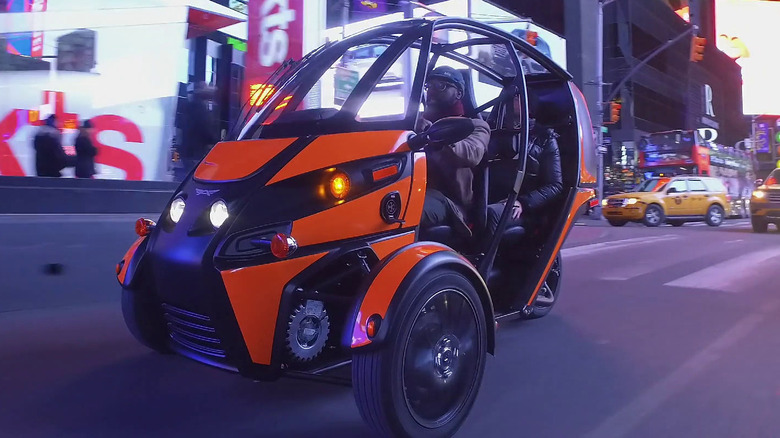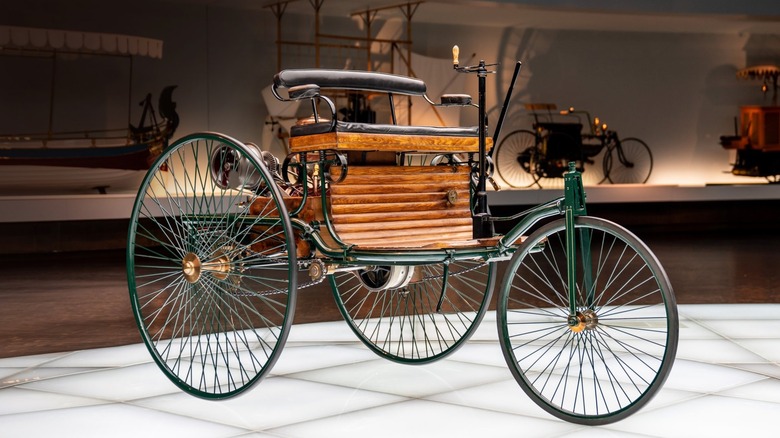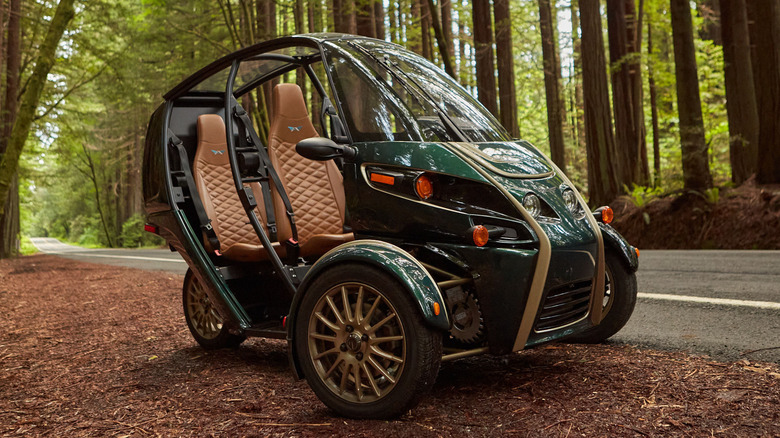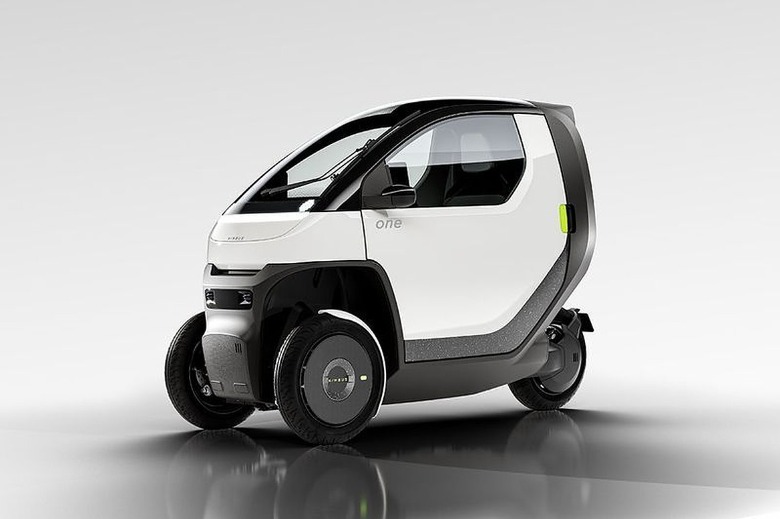Could Three Wheels Be The Answer To Affordable Urban EVs?
Electric cars are great, but the market has yet to reach a saturation point where production costs are reasonable enough to merit a genuinely affordable price tag. The cheapest four-wheeled electric cars for sale are the Nissan Leaf, Mini Cooper SE, and Chevy Bolt EV, all of which start at or below $30,000 before applicable federal tax credits. Meanwhile, Tesla's most affordable EV, the Model 3 RWD sedan, has a $57,490 base price. In return, you get an EV that approaches the pinnacle of all-electric performance and engineering: 0 to 60 mph in 4.2 seconds, a top speed of 145 mph, and about 334 miles of driving range. Still, 57 grand isn't what you'd call inexpensive or affordable.
However, a handful of up-and-coming EV makers promise to deliver zero-emissions driving fun, acceptable range, and quirky styling while remaining pocket-friendly to the core, but there's a catch: all of these new EVs are three-wheelers or trikes, and why not? Having fewer wheels means lesser costs, making it cheaper to build. And with its more compact size, the three-wheeled urban EV will be easier to park, quicker to charge (with more miniature battery packs), and cheaper to maintain in the long run.
Three wheels are more fun
The genesis of today's modern cars is Karl Benz's two-seat Patent-Motorwagen from 1885. It features a high-speed, rear-mounted, single-cylinder four-stroke engine pumping out 0.75 horsepower. And you know what else it has? Three wire-spoke wheels (akin to the kind you'd find on a bicycle), which means the three-wheeler is ingrained deep in the DNA of the automobiles we know today, even if it doesn't look anything like what we'd consider an automobile in modern times.
During the post-WWII boom, Japanese and European automakers began reviving the three-wheeler to help citizens jump-start their economies (per Quartz). Other notable three-wheelers in auto history include the legendary Morgan 3 Wheeler, Reliant Robin, BMW Isetta, and the Polaris Slingshot, to mention a few. It seems three-wheeled vehicles are coming back via new and emerging names despite fading into obscurity with the advent of more extensive, thirstier, and heavier crossovers or sport-utility vehicles (SUVs).
Electra Meccanica Solo
Part car and part tricycle, the Electra Meccanica Solo is a single-seat electric vehicle with three wheels, front and rear trunks, a roof, and two doors. When viewed from the front, you could mistake it for a supermini, but its tall and tapering windscreen is a visual hint of Solo's three-wheeled silhouette. It has a 16.1 kWh battery pack mounted on the floor, sending juice to a single electric motor that churns out 82 horsepower and 128 lb-ft of torque. And since the Solo only weighs 1,380 pounds, it scoots from 0 to 60 mph in eight seconds, has a top speed of 80 mph, and achieves 100 miles of driving range on a single full charge.
More importantly, the Electra Meccanica Solo has an $18,500 base price (before destination). The clincher? Three-wheeled EVs could be eligible for federal tax credits of up to $2,500 or 10% of the vehicle cost, depending on the location, according to Leafscore, which could help make the purchase more wallet-friendly.
Daymak Spiritus
Vintage three-wheelers are considered oddities by some, but you can't say the same about Canadian mobility company Daymak and its Spiritus electric three-wheeler. The Spiritus is similar in form to the Electra Meccanica Solo with a car-like façade, two doors, and a roof on top of a three-wheeled platform. But whereas Solo reminds us of the face of older Korean cars, the Spiritus is a hotrod with its Darth Vader-ish grin. If you look closer, you'll see it also has a fiendishly wide single rear wheel, a telltale sign of exhilarating performance.
The Daymak Spiritus is unlike any modern three-wheeler that focuses more on efficiency and range. Daymak claims Spiritus is the fastest three-wheeler in the world, capable of rushing to 60 mph from a dead stop in under two seconds. If you want that, you'll need to fork over $149,000 for the range-topping Spiritus Ultimae with dual-motor AWD, an 80 kWh battery, and about 298 miles of range. A less frightening prospect is the Daymak Spiritus Deluxe with 186 miles of range and a more reasonable $19,995 base price.
Arcimoto FUV
Arcimoto began production of its Fun Utility Vehicle (FUV) in Eugene, Oregon, last 2019 and is available to retail customers in a handful of states. The FUV is an electric trike with two tandem seats, a windscreen, and a roof. It achieves 100 miles of range and has a 75 mph top speed, while the generous equipment list includes heated grips, heated seats, Bluetooth speakers, and a lockable rear storage bin. It also comes with removable half doors to deliver an open-air driving experience, which is not bad for its $18,000 base price.
Arcimoto recently acquired Tilting Motor Works with plans of unveiling a tilting three-wheeled electric vehicle that could lean into corners to deliver better dynamics. The leaning kit also applies to existing two-wheeled motorcycles and retails for $14,000 (including installation).
Similarly styled is the Nimbus One, which has three wheels and a slim design. It's a single-seat EV with built-in safety features like a driver's airbag, onboard cameras, and AI software to prevent collisions. It achieves 93 miles of driving range on a single charge. The base price is just $9,980, but you can rent it for $200 monthly. These modern three-wheelers are knocking on mainstream consumers' hearts (and wallets) by offering a cleaner, quirkier, and more fun way to get around town. If you want an EV that won't break the bank, maybe a three-wheeler will fulfill your whims.



